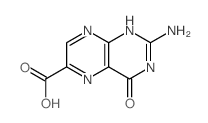| Structure | Name/CAS No. | Articles |
|---|---|---|
 |
Pterin-6-carboxylic acid
CAS:948-60-7 |
Tal Offer, Bruce N Ames, Steven W Bailey, Elizabeth A Sabens, Mamoru Nozawa, June E Ayling
Index: FASEB J. 21 , 2101-2107, (2007)
Full Text: HTML
The known functions of folate are to support one-carbon metabolism and to serve as photoreceptors for cryptochromes and photolyases. We demonstrate that 5-methyltetrahydrofolate (5-MTHF, the predominant folate in plasma) is also a potent, near diffusion limited, scavenger of singlet oxygen and quencher of excited photosensitizers. Both pathways result in decomposition of 5-MTHF, although ascorbate can protect against this loss. In the absence of photosensitizers, 5-MTHF is directly decomposed only very slowly by UVA or UVB. Although synthetic folic acid can promote DNA damage by UVA, submicromolar 5-MTHF inhibits photosensitization-induced strand breaks. These observations suggest a new role for reduced folate in protection from ultraviolet damage and have bearing on the hypothesis that folate photodegradation influenced the evolution of human skin color.
| Structure | Name/CAS No. | Molecular Formula | Articles |
|---|---|---|---|
 |
Pterin-6-carboxylic acid
CAS:948-60-7 |
C7H5N5O3 |
|
Photodegradation of folic acid in aqueous solution.
1999-03-01 [J. Pharm. Biomed. Anal. 19 , 269-275, (1999)] |
|
Biosynthesis and metabolism of tetrahydrobiopterin and molyb...
1985-01-01 [Annu. Rev. Biochem. 54 , 729, (1985)] |
|
Sequence-specific DNA damage induced by ultraviolet A-irradi...
2003-02-15 [Arch. Biochem. Biophys. 410 , 261-268, (2003)] |
|
Type I collagen as an extracellular matrix for the in vitro ...
2014-01-01 [J. Pharm. Biomed. Anal. 23 , 1039-1044, (2000)] |
Home | MSDS/SDS Database Search | Journals | Product Classification | Biologically Active Compounds | Selling Leads | About Us | Disclaimer
Copyright © 2024 ChemSrc All Rights Reserved